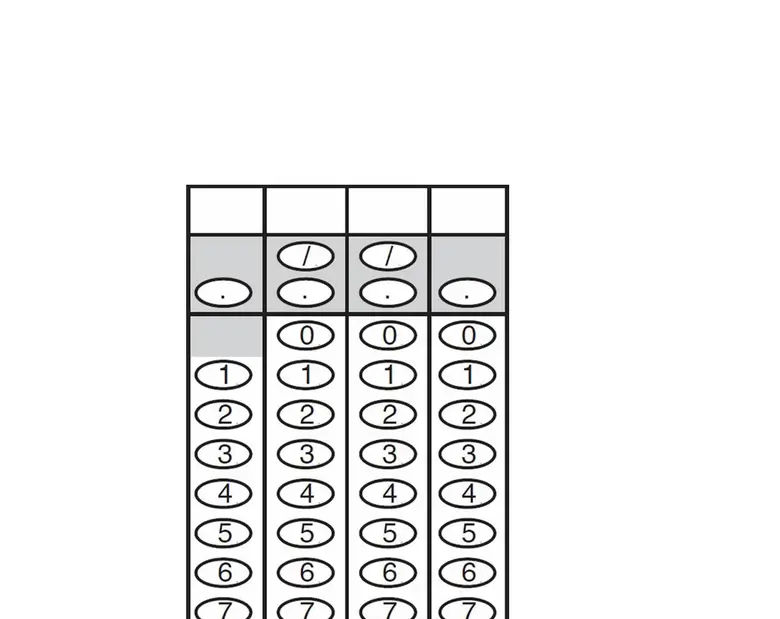Grid-In Guide for SAT Math

While much of the SAT is multiple-choice (besides the optional Essay portion, of course), there are a few SAT Math questions that will require you to produce your own answers. The College Board calls these “student-produced responses," but at The Princeton Review we like to call them Grid-In Questions. Instead of a set of four choices, you'll provide your own solution using a grid that looks like the image above.
But while they may appear differently than the questions you're used to, Grid-Ins aren't all that different from other math questions on the SAT: They'll appear on both sections (calculator and non-calculator), many of the techniques you use elsewhere will still apply, and you must still work carefully to arrive at the correct answer. Here are three basic rules to help you on Grid-Ins come test day.
Most Answers Are Integers
If you take a look at the grid again, you'll see that it provides a quite limited set of responses. That means only certain types of problems can be presented in this format. You can't indicate a variable, square root, pi, or a negative number, so if your answer uses any of these, it's not correct. (Don't be surprised if you see these things in the question itself, though.)
Now, if a question involves the % or $ symbol, the test will tell you to ignore them when providing your answer.
Use the Boxes
You'll also notice that, in addition to bubbles for your answer, the grid also features boxes along the top where you can write your answer out. Your written answers won't affect the scoring of the test, so if you write the correct answer in the boxes and grid in the wrong bubbles, you won't get credit. However, I suggest writing in your answers anyway — before you darken in the bubbles below. This makes you less likely to make an error when you grid in, and it also makes it easier to check your work.
Another note about filling in the grid itself: Although you'll receive credit no matter where you put your answer on the grid, you should always begin writing your answer in the far-left column. This ensures that you will have enough space for longer answers when necessary. You'll also cut down on careless errors if you always grid in your answers the same way.
But what happens with a decimal answer? First, don't round your answer unless the question tells you to. Simply fill in as many digits as you can. If you have an answer between 0 and 1, don't include a zero to the left of the decimal! If a number has at least three decimal places, the College Board expects three decimal places in the response. For example, if the answer to the question is 0.125, then you should put in “.125" and not “0.12" or “0.13."
Don't forget that a decimal can also be represented using a fraction. The SAT reads answers as improper fractions and not mixed numbers: “22/3" will be read as twenty-two thirds and not two and two thirds. Also, you do not need to reduce fractions unless they don't fit in the four boxes. “6/12" is as valid a response as “1/2." The SAT has never asked students to simplify; so, unless the question says to do so, don't worry about it.
Answer Aggressively
Same as anywhere on the SAT, there is no penalty for a wrong answer on a Grid-In problem. So you're better off providing some type of answer than you are leaving one blank. Now, I'm not suggesting you guess blindly, but if you work a problem and arrive at an answer you're even semi-confident in, jot it down. Don't leave a question blank just because you're worried it's incorrect — you wouldn't do that for multiple-choice, so you shouldn't do that here.
Don't be caught off guard by anything on the SAT when test day rolls around. Just like Grid-Ins on the SAT Math, each section has its own set of tricks and surprises waiting to slow you down, and you don't want to show up underprepared. So for more on how to ace the Math sections, as well as every other section of the test, check out our book Cracking the SAT. And to really get your SAT test prep off on the right start, take a free practice testto see what areas can help you best improve your score.
